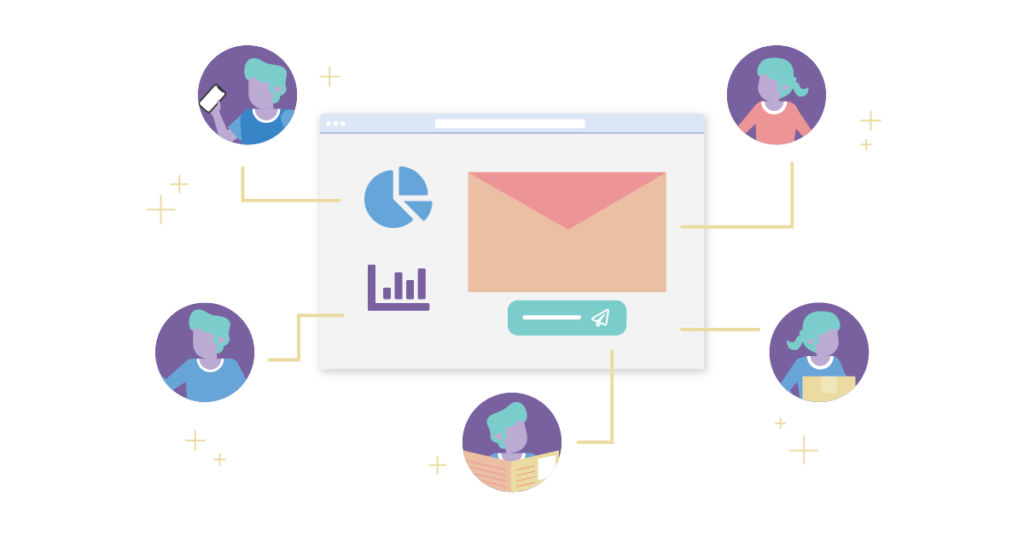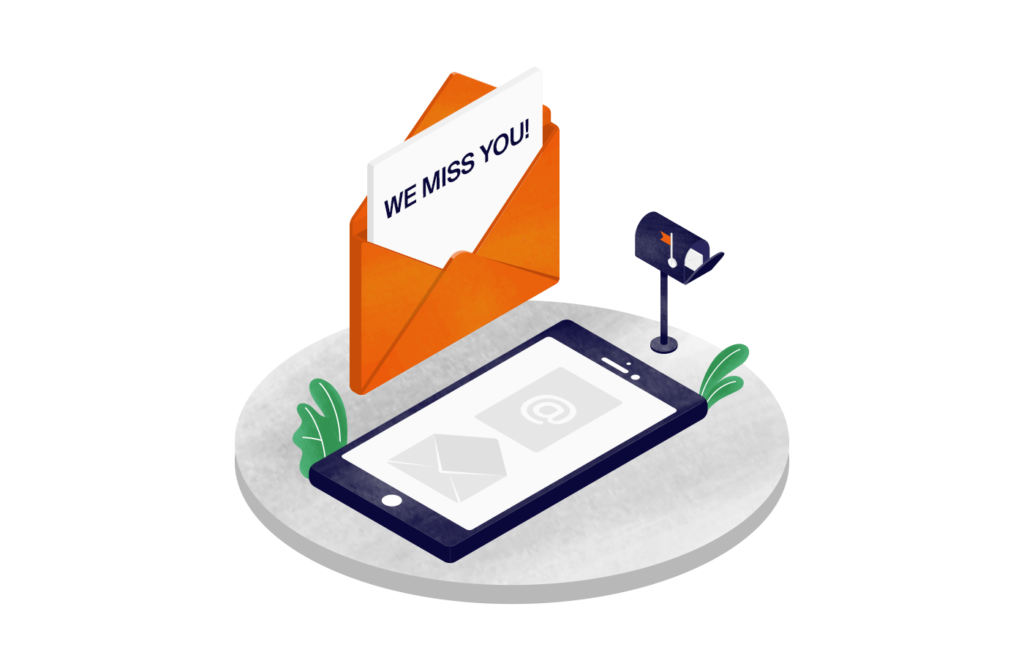Re-Engagement 101 - How to Reconnect with Inactive Subscribers
Use a reengagement email strategy to win back your inactive subscribers and improve conversion. There are different strategies to use when reconnecting with inactive subscribers, like segmenting the email list, using personalized emails, and using reengagement tools.

Customer loyalty is an integral part of every business. Whatever your digital marketing program's shape, size, or form, customers always remain in your mind. We work for every click, view, and open because we’re after engagement. The higher the campaign’s engagement, the better it is for the business’s bottom line. As such, the value of a well-crafted email cannot be overstated.
But life happens—we neglect things or are forced to focus on other equally essential business requirements. Our email list becomes stagnant, with customers losing interest, impacting crucial email metrics.
So, how can you nurture relationships and prevent your customers from losing interest? Or worse, how can you reengage your subscribers?
Your email list isn’t dead. It only requires a few creative tweaks and recalibration.
In this blog, we’ll discuss a few recommendations and tips for reengaging and reconnecting with your inactive subscribers. Learn how to recharge your email marketing campaign and improve your metrics.
Why should you reactivate your email list?
But first, let’s discuss why you should still use a dying email list.
Your email has been underperforming lately, with plenty of idle and uninterested subscribers. While some things are better left untouched and undisturbed, this isn’t the case for email marketing.
Remember, email marketing remains a crucial and significant profit-generating channel. About 85% of marketers agree that lead generation is a vital goal for every business. According to Forbes, 81% of companies use email for their marketing strategy, and 64% of small businesses rely on email marketing.
Yes, it’s worthwhile to re-engage and win back your customers. Remember, there’s a reason they joined your list in the first place, and let’s admit it: Your list is a profit pool that can benefit your business in the long run!
#1 Define what’s considered “inactive” and segment the list
It may surprise you that there are different levels of disengagement. As such, the first thing you'll need to do is segment your email list accordingly. Simply put, email segmentation is the division of email addresses or subscribers into smaller segments based on specific criteria. Here are a few email segmentation criteria that you can use when firing up your list:
- Subscribers who have never signed up for the service or purchased the product but regularly browse the website are considered a “captive audience” that isn’t too difficult to convert.
- Customers who have purchased the product or service but have yet to engage with the website ever since.
- Users who shared their email addresses and collected a freebie but ghosted your company.
As you can see, each segmented list poses a specific challenge. So, it is very important to start your program by segmenting according to your criteria and crafting a bespoke re-engagement strategy.
#2 Use a targeted email series to reengage your inactive subscribers
Once you have your segmented email lists, you can fire up the appropriate email sequences. The type of email you send depends on the list's nature or your criteria. For example, for “spectators” who haven’t purchased yet, you’ll need to check their engagement history. Find out the content that they like or have the most animated response to. Revisit their content preferences and use these to plan conversions.
#3 Write a creative “We Miss You Email”

Remember your list of subscribers who left after buying the product or signing up for a service? You can reconnect with them by crafting a creative and engaging “We Miss You Email.” A “We Miss You” email is a targeted communication sent to inactive subscribers. The primary reason for this email is to rekindle the interest or attention and ultimately bring inactive customers back.
Of course, a generic message can’t be passed off as a “We Miss You Email.” This targeted email must convey sincerity and appreciation for the subscriber’s previous transaction or activity. Your aim here is to draft an email that can subtly encourage them to take action, whether to visit the site or social media page or to sign up for a product.
#4 Always personalize your messages
Remember our first step, which requires you to segment your email list?
To successfully execute your email segmentation strategy, you must provide a personalized email experience for each subset. And we’re not just talking about using their names when drafting emails. We must consider them individually by looking at their history. For example, you can review the first contact, other contact points, and content preferences. You’ll need to leverage data, including their browsing activities, purchase history, and even demographic information. In short, you’ll need to create a personalized experience for your subscribers so that they feel valued.
You’ll also want to focus on the subject lines when personalizing your messages. Think of your subject line as an elevator pitch; it’s the first thing subscribers will see. It’s the make-or-break element in your email; by just glancing at it, the recipient can easily decide whether to open or ignore it.
The best subject lines often evoke curiosity, urgency, or emotion, prompting your subscribers to open and read the email. If you’re personally handling your email content, you can add the recipient’s name, power words, emojis, or numbers. The subject line sets the tone for your email, so make it work.
#5 Use Facebook for your retargeting email campaigns to win back customers
Yes, you can also use Facebook to tweak your re-engagement campaign. To retarget customers using Facebook, proceed to “Adverts Manager” or its “Power Editor.” Create an ad, and set “Engagement” as your ad objective. Name your Facebook ad, and click “Continue”. Now, it’s time to refine your ad to retarget customers.
Click “Create New” and pick “Custom Audience” using the drop-down menu. You’ll find several options here, and select “Customer File.” This option will let you import one of your email segment lists to serve as your custom audience.
#6 Use re-engagement tools
There are a few re-engagement tools that you can use, and email service providers offer some of them. Some tested re-engagement tools are automation, polls, surveys, online competitions, coupons or promo codes, or product recommendations.
With automation, you can send a series of re-engagement emails to your inactive customers over time. Some email service providers let you set post-send actions to automatically unsubscribe users or move them into a different list after you complete your re-engagement series.
Another trick you can do is host polls and surveys on your emails, and you reward them with small gifts or promo codes if they participate. Another exciting re-engagement tool is to host an online contest or raffle to generate interest in your products or services.
As mentioned, coupons and promo codes can help you regain inactive customers. For example, you can send them a special promotion code and a “We Miss You Email” to let them know they’re missed and valued. You can also use this opportunity to update them with the latest news or product developments. Also, you can recommend products and services based on their browsing history or purchase record.
If you use any of these tools, you must always test your content and track your results. You can use an A/B Testing Campaign to check and compare different versions of your email content and see the most effective re-engagement content for your segmented list. For example, check if your customers are more likely to re-engage with a 10% coupon code for their next order or if they want a code for free shipping on their next transaction. Use the results to tweak or upgrade your campaign. By checking your email metrics, you get valuable insights into your customers, their preferences, and their requirements.
Wrapping up
Don’t give up on a “dying email list.” A few dozen inactive subscribers can be frustrating since they’re part of your potential customer pool. But there’s always a solution to most of our marketing problems, and in the case of a few dozen inactive subscribers, you need to lay out a creative re-engagement effort. Use this blog's tricks, strategies, and tools to jumpstart your campaign. Or, if you need help automating your email campaign or have questions about transactional emails, don’t forget to browse our blog or send us your questions!

